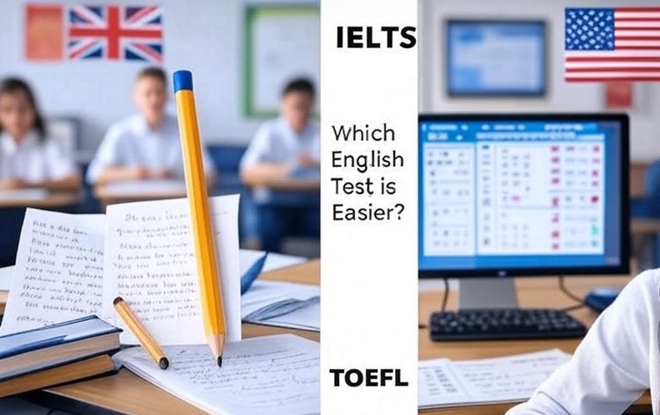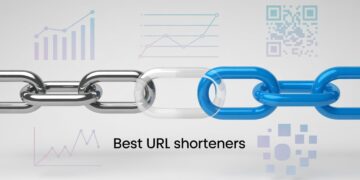For non-native English speakers aspiring to study, work, or immigrate to English-speaking countries, demonstrating English proficiency is a mandatory requirement. Two of the most commonly recognized English language proficiency tests are the IELTS (International English Language Testing System) and TOEFL (Test of English as a Foreign Language). Both tests are accepted by thousands of universities, government agencies, and professional organizations around the world.
A recurring question among test-takers is: IELTS vs TOEFL – Which English Test is Easier? This article offers a detailed comparison between the two exams to help you determine which test aligns best with your learning style and goals. We’ll examine key features, formats, scoring systems, section-wise difficulty, and offer practical advice to guide your decision.
What Are IELTS and TOEFL?
IELTS Overview
The IELTS exam is jointly administered by the British Council, IDP: IELTS Australia, and Cambridge Assessment English. It is available in two formats:
- IELTS Academic: For higher education and professional certification.
- IELTS General Training: For migration or work-related purposes.
IELTS tests four language skills: Listening, Reading, Writing, and Speaking. You can choose between paper-based and computer-based formats. The Speaking section is conducted in person with a certified examiner.
IELTS is designed to reflect real-life use of English – whether for study, work, or life in an English-speaking country. One of its strengths is offering practical English contexts, particularly in the Listening and Speaking sections, which simulate daily interactions and workplace scenarios.
TOEFL Overview
TOEFL is developed and administered by ETS (Educational Testing Service) and is primarily academic in focus. The most widely available format is the TOEFL iBT (Internet-Based Test). The exam is entirely computer-based, including the Speaking section, where answers are recorded and assessed by examiners.
Unlike IELTS, TOEFL adopts a more uniform structure with all responses typed and submitted online. This makes it ideal for those who are comfortable with digital testing environments and prefer working independently.
TOEFL focuses more on evaluating the test taker’s ability to understand and use English in an academic context. It requires a stronger grasp of American academic terminology and expectations.
Key Differences Between IELTS and TOEFL
Format and Delivery
Feature |
IELTS |
TOEFL |
|---|---|---|
Format |
Paper or Computer |
Computer-only (iBT) |
Duration |
~2 hours 45 minutes |
~3 hours |
Speaking |
Face-to-face interview |
Recorded responses |
Writing |
2 tasks |
2 tasks |
Reading |
3 texts |
3-4 texts |
Listening |
4 sections |
3-4 lectures + conversations |
Scoring System
Section |
IELTS Score (0-9) |
TOEFL Score (0-30 per section) |
Listening |
0-9 |
0-30 |
Reading |
0-9 |
0-30 |
Writing |
0-9 |
0-30 |
Speaking |
0-9 |
0-30 |
Overall |
Average of sections |
Total out of 120 |
IELTS scores are given in bands, with 9 being the highest, and are averaged across all four sections. TOEFL scores are cumulative, with each section scored out of 30 and totaled to a maximum of 120.
Accents and Language
- IELTS exposes candidates to a range of English accents, including British, Australian, and Canadian.
- TOEFL features primarily North American accents and vocabulary.
Test Acceptance
Both tests are widely accepted around the globe, but regional preferences vary:
- IELTS is preferred in the UK, Australia, New Zealand, and increasingly in Canada.
- TOEFL is favored in the United States and also accepted across Europe and Asia.
Section-by-Section Comparison
Listening
IELTS Listening:
- Four recordings, starting with a conversation and ending with an academic lecture.
- Questions include multiple-choice, sentence completion, labeling diagrams, and matching information.
- Candidates listen only once.
TOEFL Listening:
- Includes 3-4 lectures and 2-3 conversations.
- All audio is followed by multiple-choice questions.
- Candidates take notes and answer later.
Analysis: IELTS offers more question variety and real-life conversations. TOEFL has longer recordings and focuses more on academic content.
Reading
IELTS Reading:
- Three texts of increasing difficulty.
- Academic version uses excerpts from journals and textbooks.
- Questions include short answers, matching headings, summary completion.
TOEFL Reading:
- 3-4 academic texts.
- Questions are all multiple-choice.
- Passages are denser and more academic.
Analysis: IELTS is broader in format and assesses general comprehension. TOEFL requires deep academic reading.
Writing
IELTS Writing:
- Task 1 (Academic): Analyze a chart or graph.
- Task 2: Write an essay on a social issue or opinion.
TOEFL Writing:
- Task 1: Read a passage, listen to a lecture, and write a response.
- Task 2: Write an argumentative essay.
Analysis: IELTS Task 1 is unique in requiring visual interpretation. TOEFL requires synthesis of listening and reading, which can be challenging.
Speaking
IELTS Speaking:
- In-person interview with an examiner.
- 3 parts: Introduction, cue card (monologue), discussion.
TOEFL Speaking:
- 4 tasks: Independent and integrated (combining listening and reading).
- Responses recorded via computer.
Analysis: IELTS is more conversational. TOEFL feels more like an academic monologue, which may be easier for introverted candidates.
Which Test Should You Take?
Choose IELTS If:
- You are more comfortable writing by hand or speaking to a person.
- You are used to British English spelling and vocabulary.
- You want to migrate to or study in the UK, Australia, or New Zealand.
- You prefer visual and conversational tasks.
Choose TOEFL If:
- You are more familiar with American English.
- You prefer typing and working on a computer.
- You plan to study in the US or Canada.
- You are more comfortable with structured academic testing.
Test Availability and Cost
IELTS
- Cost: ~$215–$250 USD
- Available in both paper-based and computer-based formats
- Offered in more than 140 countries
TOEFL
- Cost: ~$180–$230 USD
- Available in 150+ countries
- Primarily computer-based (iBT)
- Offers more frequent test dates
Real Student Experiences
Case Study 1: Priya from India
“I chose IELTS because I was planning to migrate to Australia. I found the Speaking section easier because I could interact with a real person. The Reading was a bit tough due to time constraints.”
Case Study 2: Daniel from Brazil
“TOEFL suited me better as I’m used to typing and online formats. The lectures in the Listening section felt like my university classes. However, speaking into a microphone without human feedback was a bit strange.”
Case Study 3: Lian from China
“I took both exams. I scored higher on IELTS because I’m more comfortable in face-to-face conversations. TOEFL reading was too dense for me.”
Practice Resources
IELTS
- Official IELTS practice books
- British Council IELTS Prep App
- Websites: ielts.org, IELTS Liz
TOEFL
- ETS TOEFL practice tests
- TOEFL Go! app
- Websites: toefl.org, Magoosh TOEFL Blog
Common Myths
“TOEFL is harder than IELTS”
Not true for everyone. While TOEFL is more academic, IELTS’s varied question types can be tricky.
“IELTS is only accepted in the UK”
False. IELTS is accepted in over 140 countries, including the USA.
“TOEFL is easier because it’s computer-based”
That depends on your typing speed, tech comfort, and ability to listen and respond quickly.
IELTS vs TOEFL – Which English Test is Easier?
As we’ve seen, the answer to the question “IELTS vs TOEFL – Which English Test is Easier?” depends on various personal factors.
Ask yourself:
- Am I more comfortable with American or British English?
- Do I prefer speaking to a person or a microphone?
- Is typing easier for me than writing by hand?
- Do I excel in academic vocabulary and listening?
Taking a mock test for both exams can give you a clearer picture.
Frequently Asked Questions
1. Can I take both tests?
Yes, but it’s not necessary. Most institutions accept either IELTS or TOEFL.
2. Which is better for immigration?
IELTS General Training is often required for immigration. TOEFL is not usually used for this purpose.
3. Are there any age restrictions?
No strict limits, but both tests are designed for individuals 16 and older.
4. How soon will I get my results?
IELTS: 3–5 days (computer) or 13 days (paper) TOEFL: Around 6 days after the test date
5. Can I retake the test?
Yes. Both allow unlimited retakes. Prepare adequately before scheduling another attempt.
Conclusion
IELTS and TOEFL are both well-established, reliable tests to assess English proficiency. Neither is inherently easier than the other — the right choice depends on your skills, goals, and comfort level with each format.
Consider the following before deciding:
- Regional preferences of your chosen institution
- Your learning and testing style
- Cost and convenience
- Preparation time available
The key to success in either exam lies in understanding the format, practicing with real questions, and choosing the test that suits your strengths.
If you’re still unsure, take a sample test of both IELTS and TOEFL to see which feels more natural.
Ultimately, whether you choose IELTS or TOEFL, diligent preparation and understanding of expectations will lead to success in achieving your academic or immigration goals.
So, IELTS vs TOEFL – Which English Test is Easier? Only you can decide that based on what suits your abilities and future plans best.












